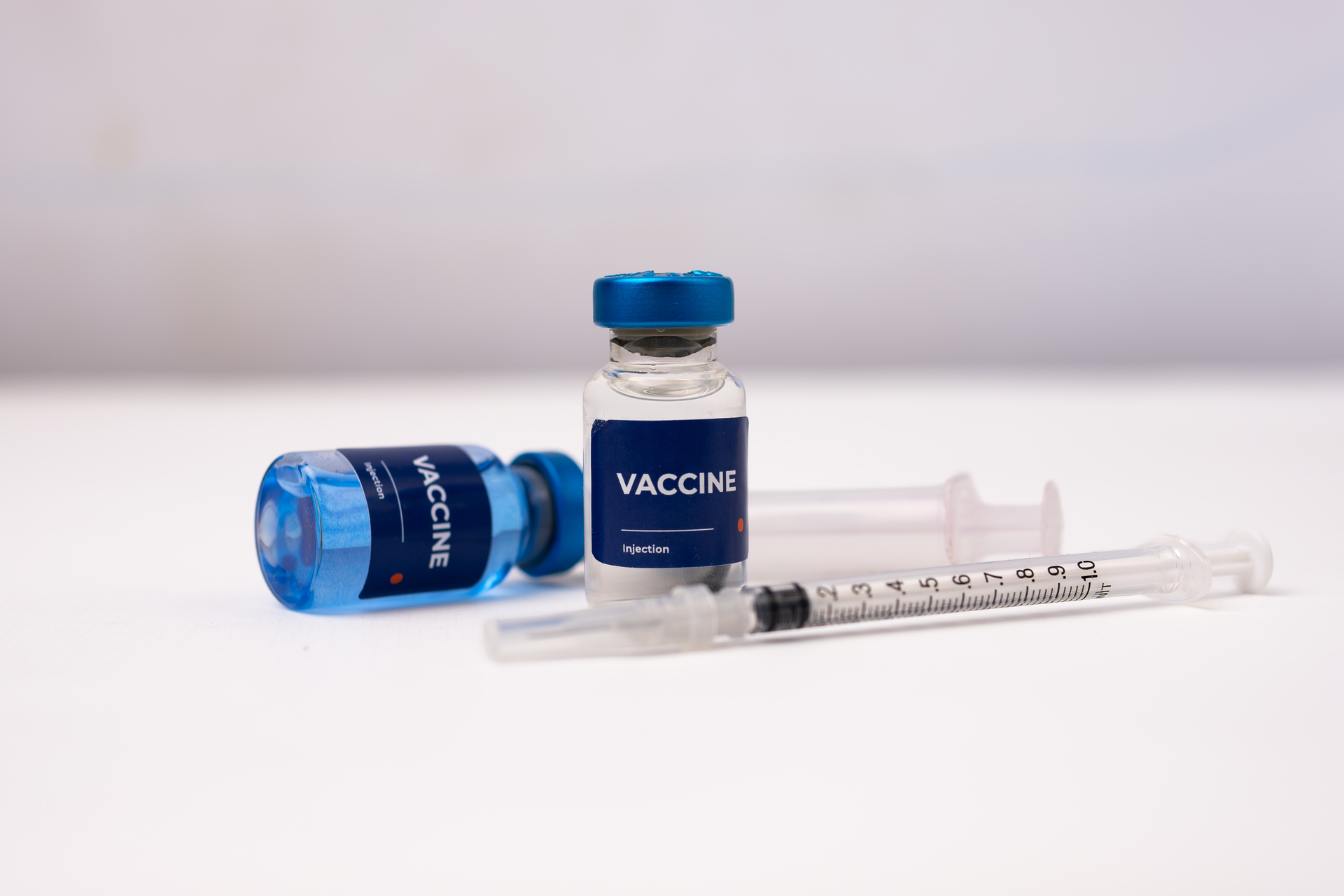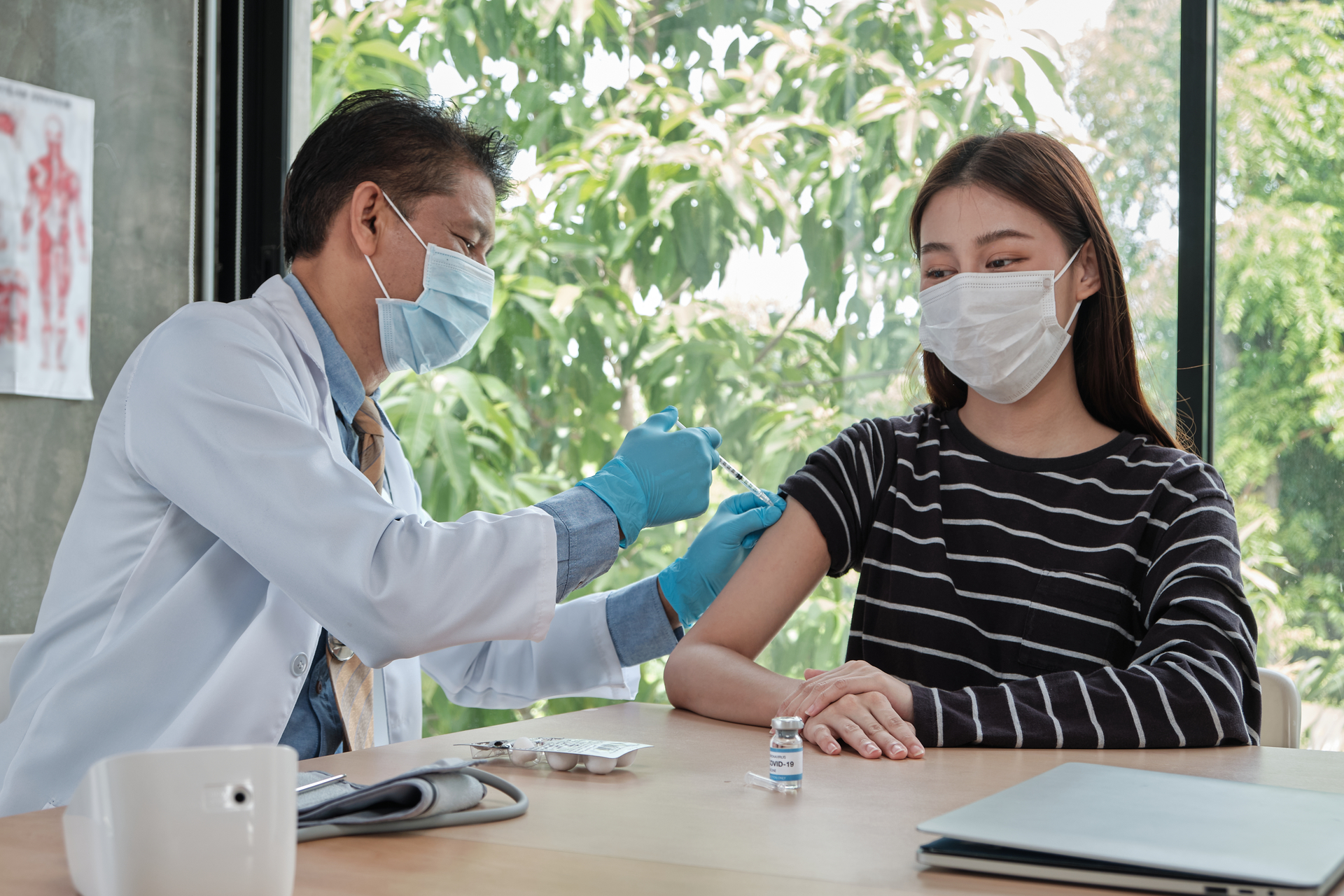Vaccines contain not only active ingredients that protect against disease, but also small amounts of other substances that ensure the shot is safe and stable. Many of these components are already present in the body but are rigorously tested to confirm they are harmless in the dosages used in vaccines.
Serious allergic reactions to a particular component are rare. Nevertheless, vaccinations are always administered under medical supervision. The main components of a vaccine are as follows:
 |
A vial of vaccine for immunization. Photo: Vecteezy |
A vial of vaccine for immunization. Photo: Vecteezy
Antigens
These are substances that help the immune system recognize disease-causing agents. Antigens can be a weakened virus or bacterium that can no longer replicate or cause illness; a small part of one of these agents; or genetic instructions.
Before being used in humans, antigens are tested in laboratories and on animals to measure their effectiveness and safety. The shots are then tested for safety in humans. Each research phase must meet strict standards, with the safety and effectiveness of the shots closely monitored.
Furthermore, vaccines continue to be monitored after licensing. If safety concerns arise, the shot may be temporarily or permanently withdrawn.
Adjuvants
Adjuvants help the immune system respond more strongly to antigens. Aluminum salts are common adjuvants. Aluminum helps slow the release of the antigen after injection, thereby enhancing and prolonging the immune response.
The amount of aluminum in vaccines is very small. The total amount of aluminum that infants are exposed to through vaccines and diet is much lower than safe levels.
Because adjuvants are designed to stimulate the immune system, vaccines can cause various local and systemic reactions, such as redness, swelling, and pain at the injection site, as well as fever, chills, and body aches. Although uncomfortable, these reactions are not dangerous and indicate that the immune system is responding.
When combining adjuvants with antigens, experts conduct careful laboratory testing to ensure safety before clinical trials as part of the entire vaccine formulation. Adjuvants have also been proven safe in large and rigorous studies.
Preservatives
Some multi-dose vaccine vials contain a small amount of preservative. This prevents harmful bacteria or fungi from growing after the vial is opened. Without preservatives, contaminated vaccines could cause serious infections in recipients.
One example of a preservative is thiomersal (also known as thimerosal), which was once a source of concern over a potential link to autism. However, there is no evidence that the use of thiomersal in vaccines is harmful to humans. Numerous studies have since confirmed that this substance is safe and is quickly eliminated from the body, even in newborns. Scientific studies have also shown no link between vaccination and autism spectrum disorder.
 |
Vaccine components are rigorously tested for safety before being used in humans. Photo: Vecteezy |
Vaccine components are rigorously tested for safety before being used in humans. Photo: Vecteezy
Emulsifiers and Stabilizers
Emulsifiers help keep the other ingredients in the vaccine solution mixed. For example, polysorbate 80 is used in many medicines, supplements, functional foods, and ice cream.
Stabilizers are also commonly used to protect active ingredients from the effects of temperature changes during transport and storage, and to prevent components from sticking to the vial.
The amounts of these substances in vaccines are very small. For instance, the rotavirus vaccine RotaTeq contains 170-860 micrograms (mcg) of polysorbate 80, while half a cup of ice cream contains 170,000 mcg. Injectable vaccines contain even lower levels of this substance. Some other vaccines contain pork gelatin, sorbitol, and other ingredients.
Similar to adjuvants and preservatives, emulsifiers and stabilizers are rigorously evaluated in clinical trials as part of the entire vaccine formulation. Allergic reactions to vaccines containing gelatin are extremely rare, occurring in approximately one out of every two million doses administered. Therefore, people with gelatin allergies should consult their doctor before getting vaccinated.
Residuals
Vaccines may also contain small amounts of residual materials from the manufacturing process. For example, some vaccines are produced using chicken eggs and may contain a small amount of egg protein. Some antibiotics are sometimes used to help prevent bacterial contamination during production.
Other substances, such as formaldehyde, are used to inactivate viruses or detoxify bacterial toxins when included in vaccines. Although formaldehyde is subsequently diluted, small amounts may remain. These levels of formaldehyde are lower than those naturally occurring in the body and are considered safe.
Van Ha (According to Gavi)












